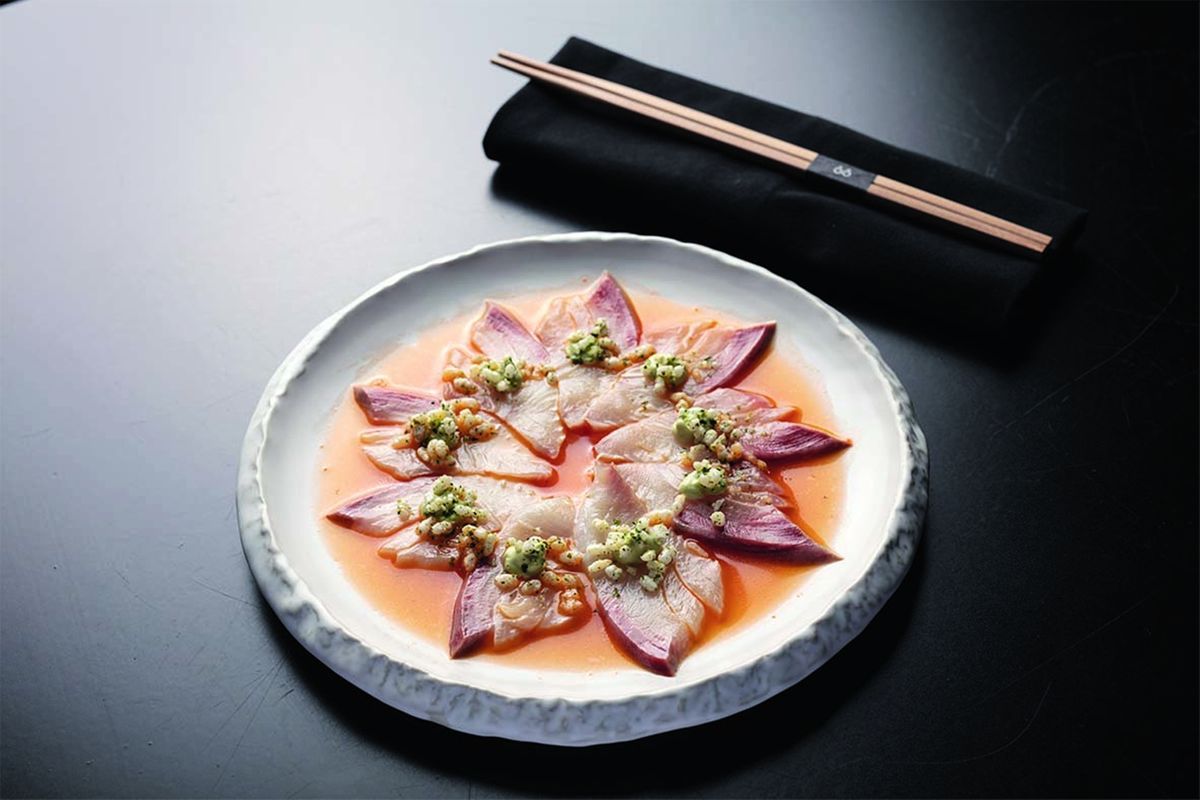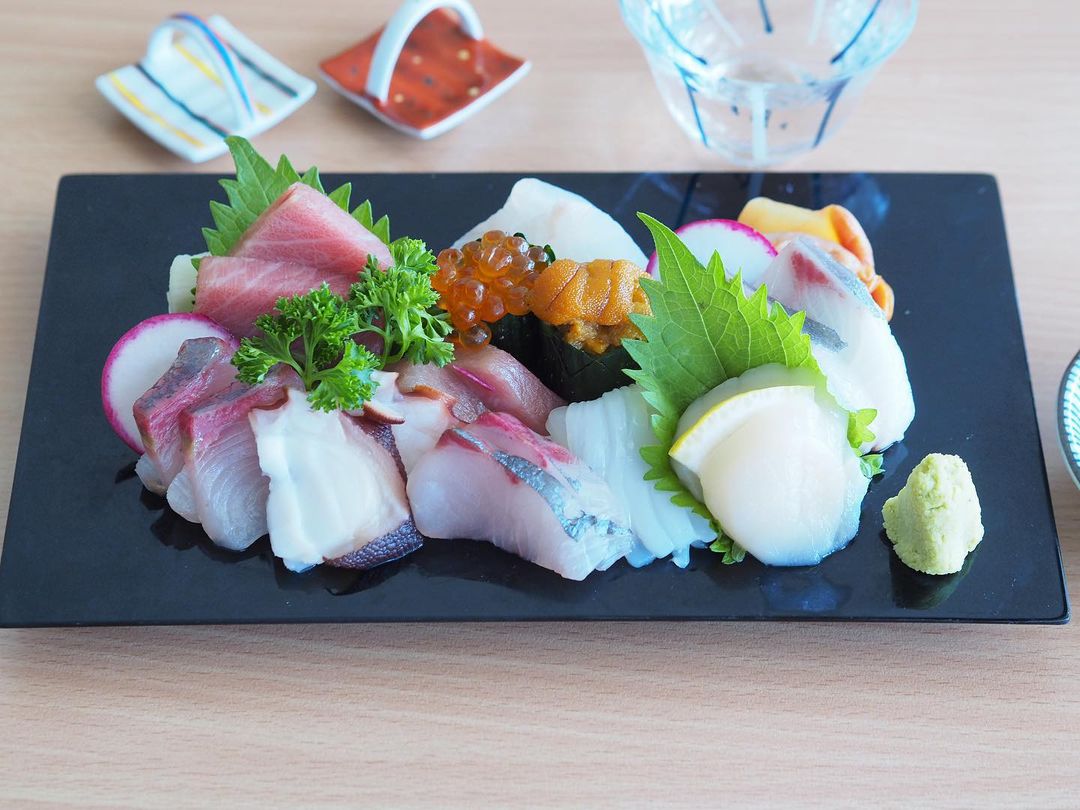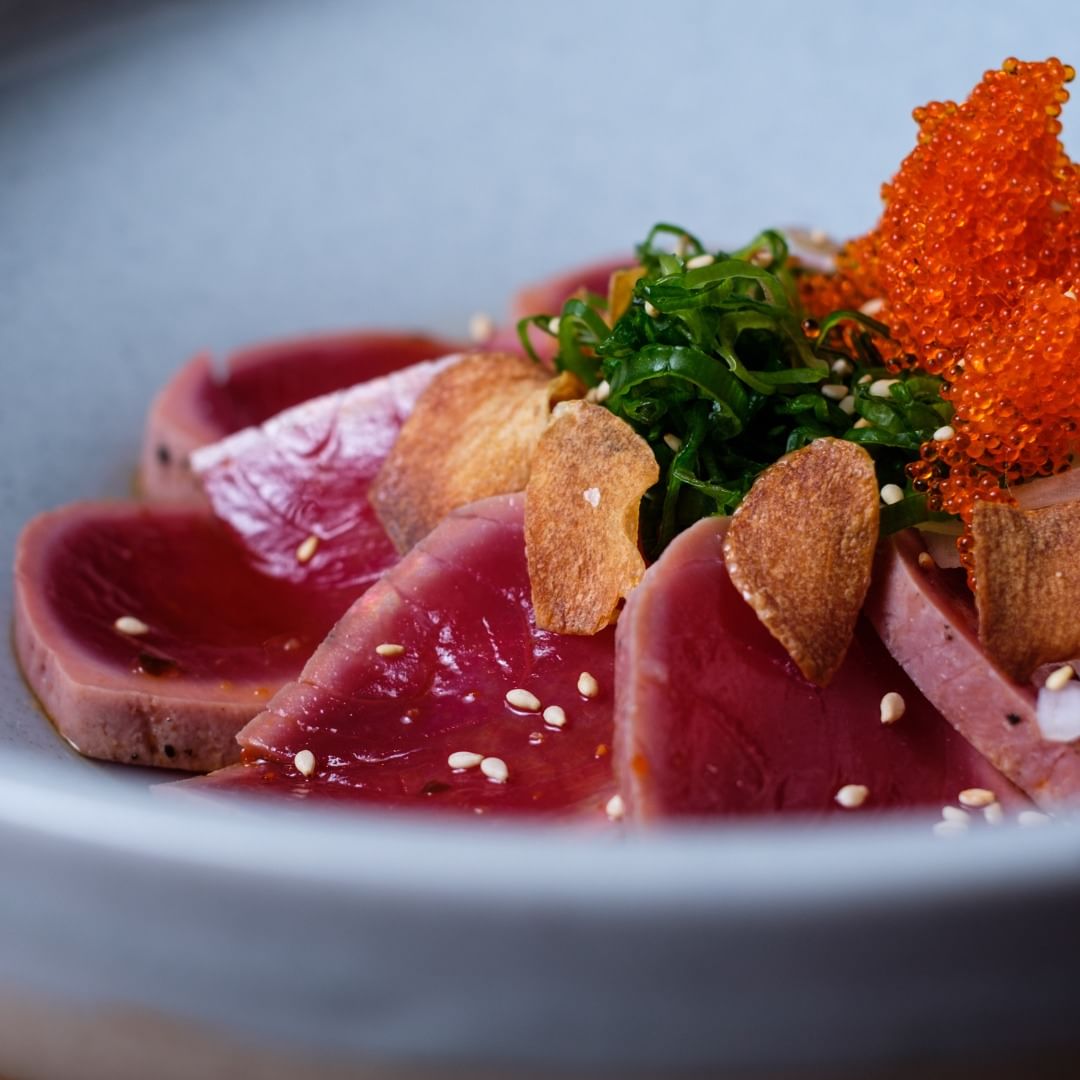The best Japanese restaurants in Brisbane may not play within a wider frame than Melbourne or Sydney, but several of these well-regarded kitchens are amongst the most studious and productive in the country.
Yes, the city lacks when it comes to high-end omakase menus – the crème de la crème of Japanese dining – but Brisbane gets by fine with its preference towards either all-encompassing traditional menus or modern twists on age-old techniques.
Below, you’ll find my favourite Japanese restaurants in Brisbane, trimming some fat to focus on consistency, quality and – where applicable – innovation.
Table Of Contents (Unranked)
The Best Japanese Restaurants In Brisbane
1. Sono, Hamilton

For more than a decade, Sono has been one of the more upscale Japanese dining experiences in Brisbane. The peaceful, riverside setting definitely helps, elevating the city’s best sushi alongside substantials like A5 Kuroge Wagyu with garlic soy jus.
Yet, most regulars seem to shy away from the elegant dining room and flock straight to the playful teppanyaki bar where a heady dose of energy is threaded through the likes of king prawns, lobsters, salmon and Wagyu.
2. OYAMA, Fortitude Valley

Those with an undying love for traditional Japanese food would typically have to contend with casual diners in Brisbane. That’s not at all a bad thing. As above, while the city may lack Melbourne’s swathe of premium experiences, the more down-to-earth eateries atone for their lack of occasion with an expressive dedication to traditional techniques.
OYAMA is a great example, of this, pushed as one of the top picks amongst the area’s very mixed bag of a dining scene. Again, the teppanyaki bar is the most popular option at this popular Fortitude Valley restaurant, offering up a bunch of set menus, the most premium of which is $135 per person with dishes like South Australian lobster grilled in garlic butter and Tasmanian
3. Hosokawa, Hamilton

Hosokawa is a perennial Hamilton favourite with a very simple, traditional setting. The prime position is a modest sushi counter behind which co-owner and chef Akio Hosokawa performs the eternally delicate and gentle dance that’s so integral to fine sushi making. This is always a favourite stop when I’m up in Brisbane and so it’s one of my top picks on this list. Nice, simple and consistent.
4. Honto, Fortitude Valley

A white chocolate and yuzu curd lamington isn’t quite something you’d expect at one of Brisbane’s best Japanese restaurants, and yet the cultish worship that surrounds Honto isn’t for nothing. While it seems that popular dessert comes and goes from the menu, it should give you an idea that Honto is anything but traditional.
The fiercely modern Japanese restaurant, unapologetically dark with walls charred black using a traditional wood-burning technique, serves up inventive twists on traditional Japanese dishes.
5. Yoko Dining, Brisbane CBD

This two-storey izakaya-style restaurant, claiming an enviable position on Howard Smith Wharves, is as notable for its design as it is for the food and drink. Owner Jonathan Barthelmess, who is behind Sydney restaurants The Apollo and Cho Cho San, as well as next-door Greek haven Greca, has clearly invested a lot of time and money into Yoko’s riverside home.
Clever red lighting catches the eye indoors, but it’s outside by the water where most want to sit. The best experience is through the “Yoko feast” pulling on every section of the menu, from the nigiri and sashimi selections to mains like sansho chicken with rice vinegar and Misozuke kingfish collar.
6. Shunsai, East Brisbane

Shunsai isn’t concerned with being anything but Brisbane’s most unassuming and traditional Japanese restaurant. With several regularly changing menus, the focus is on highlighting the historic culinary tradition of the kaiseki, which is basically a multi-course Japanese dinner set based on seasonality and availability of produce.
As such, no two dinners here (unless visits are close together) are ever going to be the same, but it’s safe to expect the likes of kingfish carpaccio, deep-fried kushi katsu, and a dish using only the finest Wagyu in Australia.
7. Tenya, Brisbane CBD

A stone’s throw from Brisbane City Hall, Tenya is the city’s largest Japanese restaurant; certainly one of its most popular. The 200-seat venue is found in the heart of Brisbane Quarter and I’ve found it can be rather hit or miss in terms of food. Service is impeccable, however, and you’ll have a much better experience if you opt for the $128 omakase rather than pick randomly from the a la carte.
8. Hikari, Teneriffe

Located in the airy suburb of Teneriffe, Hikari is the humble Brisbane Japanese eatery that manages to strike perfection despite its rather busy and overstuffed menu. Japanese comfort food is lifted by fresh local seafood and a studious restraint that clearly puts emphasis on making sure flavours are as natural and expressive as possible.
9. Mizu, Teneriffe

Cutting a soft, unassuming shadow along Brisbane River, Mizu is admirably dedicated to all facets of Japanese culture.
Aside from the consistent food options, Mizu offers origami crafting and sushi folding lessons for local school groups. There’s also a bento-box delivery service for local schools so younger diners can get a much better fix than their regular canteen fare.
In the actual restaurant, there’s a wide-ranging selection of mostly sashimi and sushi, seafood and meats, and a few salads, all bringing diners closer to home-style Japanese food like tonkatsu, takoyaki and grilled miso marinated black cod.
How Boss Hunting Chose This List Of Brisbane’s Best Japanese Restaurants
I don’t get up to Brisbane as often as I’d like. Most of my Australian travel lies south of Sydney, to cities like Melbourne and Hobart. However, over the past 10 years, I’ve had the pleasure of spending quite some time in Queensland’s underrated capital. Truth be told, there was a time when I didn’t think much at all of the city’s dining scene.
Brisbane is really coming into its own when it comes to hospitality. Contemporary concepts are still few and far between, however. Yet when it comes to Japanese restaurants in Brisbane, I almost always end up having far better experiences at this low-key, cheap-and-cheerful restaurants like OYAMA and Hosokawa.
I’ve put this list together based on my own dining experiences in Brisbane although I’ve also paid close attention to other expert reviews and Google reviews from locals. Between both first-hand and second-hand research, I feel like I’ve put together a well-curated list of Brisbane’s best Japanese food without overstuffing it.
After all, if you find a list that rounds up just about every Japanese restaurant in the city, then you should consider it more of a directory than a “best of” guide.
Things I look out for when judging whether or not I’d come back to a restaurant are service, setting and price. But food and drink is always going to be paramount. If my palate is satisfied, then I consider it worthy of inclusion.
To read more on how Boss Hunting puts these lists together please check out our editorial policy.
If you found this guide helpful, please check out some our of other Brisbane dining guides:
- Best New Restaurants In Brisbane
- Best Mexican Restaurants In Brisbane
- Best Steak Restaurants In Brisbane
Frequently Asked Questions
What is the best Japanese restaurant in Brisbane?
The best Japanese restaurant in Brisbane is Honto, but this is followed closely by Yoko Dining, OYAMA and Hosokawa.
What is the best Japanese restaurant in Brisbane CBD?
The best Japanese restaurant in Brisbane CBD is Yoko Dining at Howard Smith Wharves.
